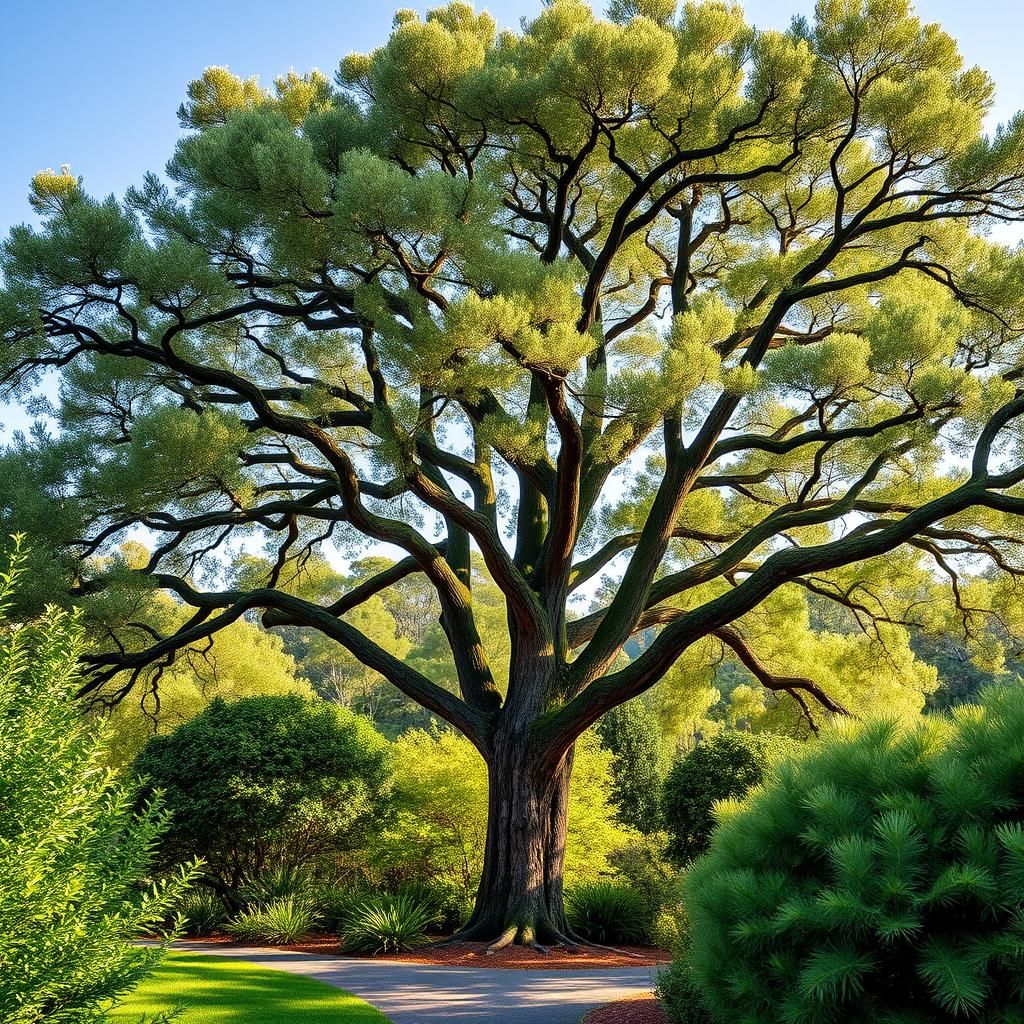The Ultimate Guide to Evergreen Shade Trees Australia for Your Landscape

When designing a landscape, choosing the right trees is essential for creating a vibrant and sustainable environment. Evergreen shade trees, in particular, offer year-round foliage, providing crucial benefits such as cooling effects, habitat for wildlife, and enhanced aesthetic appeal. This ultimate guide explores a selection of the best evergreen shade trees suited for Australia’s diverse climates and landscapes. From native species that thrive in local conditions to exotic options that bring a unique flair, this comprehensive resource will help you make informed decisions, ensuring your landscape not only looks beautiful but also contributes positively to the surrounding ecosystem.
Benefits of Evergreen Shade Trees in Australia
Evergreen shade trees play a crucial role in the Australian landscape, providing not only aesthetically pleasing features but also numerous environmental and health benefits. These trees remain green all year round, offering continuous shade that can help reduce temperatures in urban areas, thereby saving energy in homes and businesses through lower air conditioning needs. Furthermore, they contribute to biodiversity by providing habitat for various wildlife species. The right selection of evergreen shade trees can enhance property value and create a tranquil outdoor environment that promotes relaxation and well-being for residents.
Types of Evergreen Shade Trees
There are several popular species of evergreen shade trees that thrive in Australia's diverse climates. Among the most notable are the Lophostemon confertus, commonly known as the Queensland Brush Box, and the Corymbia citriodora, recognized as the Lemon-Scented Gum. Both trees are known for their robust growth and ability to provide significant shade. The Melaleuca quinquenervia, or Paperbark Tree, is another excellent choice due to its unique appearance and adaptability to various soil types, making it a staple in many Australian gardens.
Environmental Benefits
Evergreen shade trees contribute significantly to environmental health. They absorb carbon dioxide, a major greenhouse gas, thereby helping to combat climate change. Additionally, they improve air quality by filtering out pollutants and releasing oxygen, which is essential for both human and animal life. The canopy formed by these trees reduces soil erosion and helps manage stormwater, mitigating flooding risks in urban areas. Furthermore, they provide cooling effects that contribute to local microclimates, making them indispensable for maintaining ecological balance.
Maintenance and Care
Maintaining evergreen shade trees requires regular attention to ensure they remain healthy and robust. This includes pruning to remove dead or unhealthy branches which may pose safety hazards. It's also essential to monitor for pests and diseases, as some species can be susceptible to specific threats. Regular watering during dry spells is crucial, especially when trees are young and establishing their root systems. Mulching around the base can help retain moisture and regulate soil temperature. By providing consistent care, homeowners can ensure the longevity and vitality of these essential trees.
See also:
Choosing the Right Location
Selecting the appropriate location for planting evergreen shade trees is pivotal for their growth and effectiveness. Factors such as sunlight, soil type, and proximity to structures should be considered. Ideally, trees should be planted at a distance from buildings to prevent potential damage to foundations and to allow for the trees' growth to reach their full potential. Additionally, choosing a location with well-draining soil will promote healthy root development. Understanding the mature size of the tree is also critical, as planting too close to power lines or other trees may lead to future complications.
Impact on Property Value
Incorporating evergreen shade trees can positively influence property value significantly. Potential buyers are often drawn to homes with well-maintained landscapes that include mature trees, as they provide a sense of privacy and enhance the overall appeal of the property. Moreover, homes in well-landscaped neighborhoods tend to sell for higher prices compared to those lacking greenery. The presence of trees can also translate to lower energy costs, which adds to their value proposition. By investing in evergreen shade trees, homeowners not only beautify their surroundings but also make a smart financial decision.
| Tree Species | Common Names | Height (m) | Shade Area (m²) |
|---|---|---|---|
| Lophostemon confertus | Queensland Brush Box | 20-30 | 30-50 |
| Corymbia citriodora | Lemon-Scented Gum | 30-45 | 50-80 |
| Melaleuca quinquenervia | Paperbark Tree | 6-25 | 15-30 |
Choosing the Right Evergreen Shade Trees for Your Australian Landscape
When selecting evergreen shade trees for your landscape in Australia, it is essential to consider factors such as climate, soil type, and the overall aesthetic you wish to achieve. Opt for species that not only thrive in your local environment but also provide year-round shade and wind protection. Trees like the Chinese Elm and Maroondah Tallowwood are excellent choices, as they adapt well to various soil conditions and offer a robust canopy to keep your outdoor spaces cool during the hot Australian summers.
Top 5 Evergreen Shade Trees for Australian Gardens
Among the myriad options available, five standout evergreen shade trees offer significant benefits for Australian gardens. The Canary Island Date Palm is a popular choice due to its impressive height and ability to thrive in diverse climates. The Coast Banksia not only provides shade but also attracts local wildlife, enhancing the garden's biodiversity. Meanwhile, the Australian Brush Cherry is favored for its dense foliage and beautiful color variations. Lastly, the Qld Brush Box and Blackbutt both offer exceptional timber quality and stunning visual appeal, making them great additions to any landscape.
Benefits of Planting Evergreen Trees
Planting evergreen trees in your landscape comes with several benefits, such as providing consistent shade throughout the year. Unlike deciduous trees, evergreens retain their leaves year-round, allowing them to filter sunlight during hot summer months while still maintaining warmth during the winter. Additionally, they contribute to improved air quality and serve as effective windbreaks. This results in a more comfortable outdoor space, helping to reduce energy costs associated with heating and cooling.
See also:
Maintenance Tips for Evergreen Trees
Proper maintenance is crucial for the longevity of your evergreen trees. Regular watering, especially during dry spells, will help establish strong root systems. Additionally, applying mulch around the base can retain soil moisture and suppress weeds. Pruning should be done to ensure healthy growth and to remove any dead or diseased branches, promoting better air circulation and sunlight penetration. Fertilizing during the spring can also support healthy foliage development and vibrant blossoms, if applicable.
How to Create a Shade-Friendly Landscape
To create a shade-friendly landscape, it's essential to plan the layout with consideration for the growth size and canopy spread of your evergreen shade trees. Grouping trees together can help create cozy, shaded nooks while also enhancing the visual appeal of your garden. Incorporating layers of understory plants and shade-tolerant ground covers beneath the trees will add depth and beauty while minimizing soil erosion. Utilize paths and seating areas to encourage enjoyment of these shaded spaces during the warmer months.
Combining Evergreens with Other Plant Types
Combining evergreen trees with a variety of other plant types can enhance your landscape's diversity and visual interest. Mixing in deciduous shrubs or flowering perennials can create vibrant displays throughout the seasons, adding pops of color and texture. Companion planting also promotes a healthier ecosystem by attracting beneficial insects and pollinators. By thoughtfully selecting plants that thrive in similar conditions, you can create a cohesive and harmonious garden environment that is both stunning and functional.
Questions from Our Readers
What are the best evergreen shade trees in Australia?
Some of the best evergreen shade trees in Australia include the Grevillea robusta (Silky Oak), Eucalyptus species, and Casuarina trees. These trees are favored for their ability to provide dense shade and require low maintenance, making them ideal for gardens and parks across different Australian climates.
How do evergreen shade trees benefit the environment?
Evergreen shade trees play a crucial role in enhancing the environment by providing habitats for wildlife, improving air quality, and reducing urban heat. We can effectively reduce the temperatures in urban areas while promoting biodiversity and supporting local ecosystems through strategic planting.
See also:
What care do evergreen shade trees require?
Caring for evergreen shade trees typically involves regular watering during dry periods, periodic pruning to maintain shape and remove dead branches, and occasionally applying fertilizer to support healthy growth. Proper care ensures that these trees thrive and continue to provide shade and beauty for years.
Are there any drawbacks to planting evergreen shade trees?
While evergreen shade trees have many benefits, they may also present some drawbacks, such as potential root issues that can damage nearby structures or leaf litter that requires maintenance. Additionally, certain species may attract pests or require more specific climate conditions to thrive, which should be considered before planting.

If you want to read more articles like The Ultimate Guide to Evergreen Shade Trees Australia for Your Landscape, we recommend you check out our Landscaping category.
Leave a Reply
Related Articles